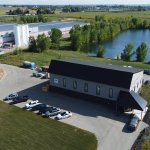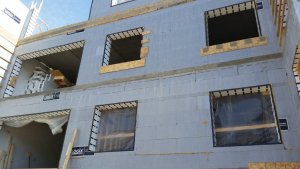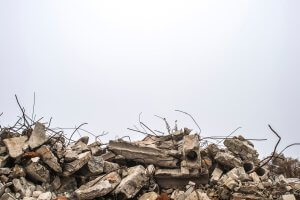ARE YOU BUILDING WITH ICFS AND HAVE A CONCRETE POUR SCHEDULED FOR A CHILLY DAY? DON’T DESPAIR!
Since your walls are already insulated on both sides, you already have a huge advantage over the guy pouring concrete slabs or stair cores in wintertime — your concrete has a great chance of staying at the ideal curing temperature without additional heating.
However, there are things you can do to ensure that your cold weather pour goes smoothly and the concrete cures well. In the post below, we’ll walk you through the best practices for pouring ICF walls in sub-zero temperatures.
Facilitate Proper Concrete Curing
For the concrete to cure properly, the freshly poured mix must be kept at a certain ambient temperature for a specific amount of time.
According to the standard, a regular concrete mix should remain at an ambient temperature of 10°C (50°F) for at least 3 days if left exposed to the elements, or until it’s reached 40% of its design strength.
When fresh concrete is poured into an ICF wall, the ICFs inherently provide the ideal curing environment. The ICF walls provide insulation to the freshly poured concrete, so the heat created during the concrete’s hydration process does not dissipate.
This way, the concrete mix can retain the required temperatures of 10°C (50°F) without heating for the requisite 3 days.
However, while the ICFs insulate almost the entire volume of the newly poured concrete at both sides, an of unprotected concrete remains at the top of the wall.
This narrow band of concrete between the foam panels is still exposed to the elements, where intense cold can interfere with the curing process. That’s why, when pouring concrete into ICF walls, the biggest thing to worry about is the top of the wall.
And you’ve got two good options for insulating the poured concrete at the top of an ICF wall. For one, you can use thermal blankets — as long as their R-Value is sufficiently high.
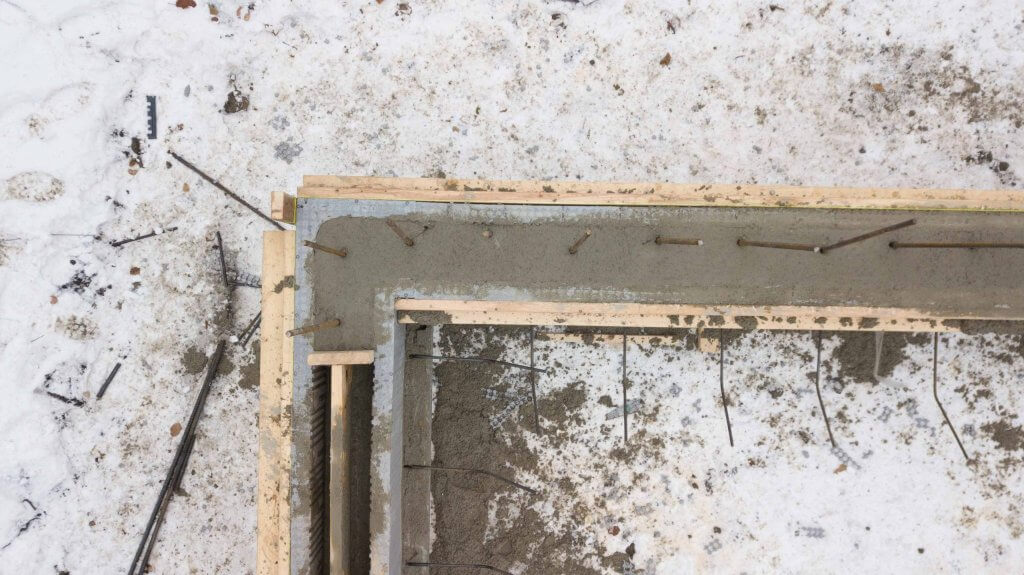
But another great option is a foam board insulation like Halo’s Subterra. These laminated rigid GPS panels provide an R-Value of R-5 per nominal inch of foam board, and this level of thermal resistance is enough to ensure the concrete cures properly at the top of the wall.
At the other end of the spectrum, using a material like straw to keep the concrete temperature steady at the top is not a great option. That’s because straw offers limited insulative value compared to foam board or insulative blankets.
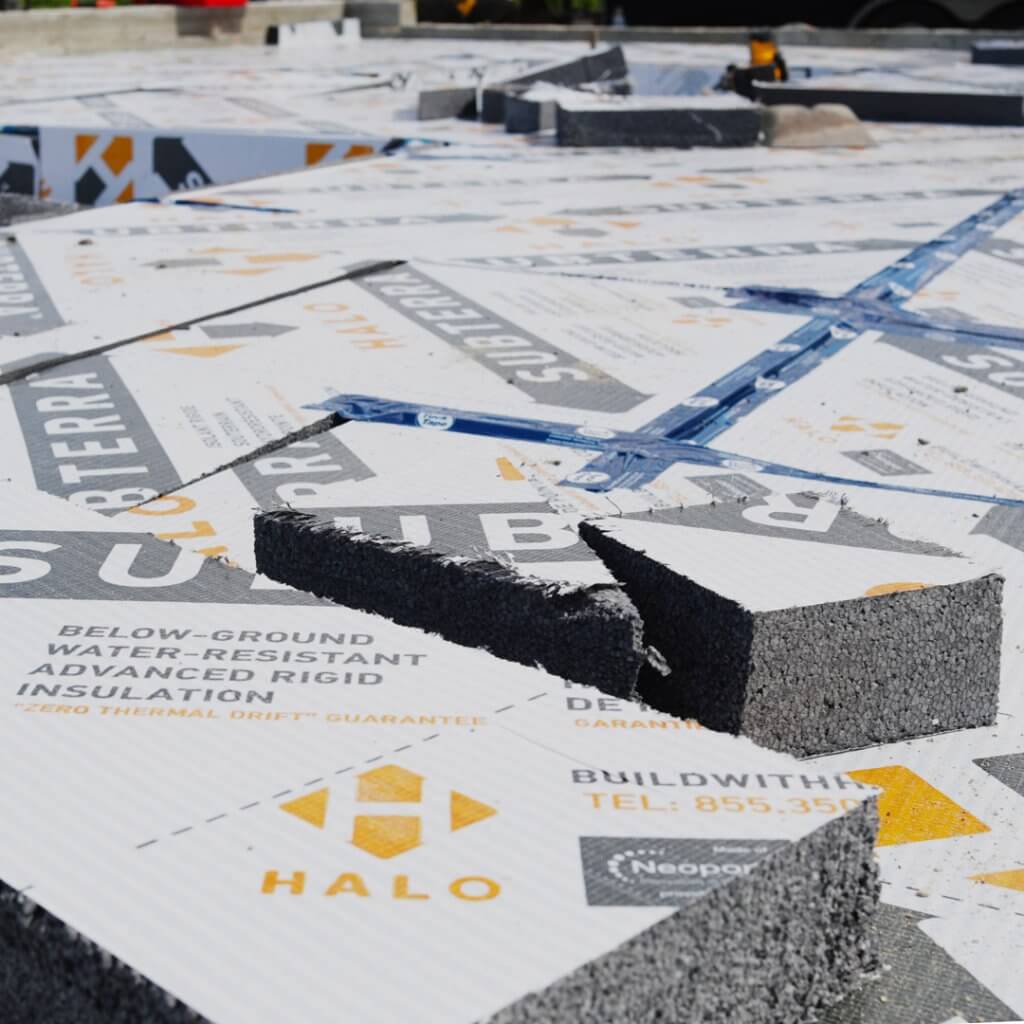
Discharge the Concrete Quickly
In cold weather, it’s important to get the concrete into the ICF wall cavities quickly so it can start curing as soon as possible after it leaves the plant.
Before the plant sends the concrete mixture over to your site, they’ll have it at a minimum of 10°C (50°F) — the ideal temperature for the curing reaction.
However, on chillier days, the plant will usually heat the aggregate or the water used in the mix in order to get the mix to 20°C (68°F), which should buy you some time before the concrete temps start to drop.
Per the CSA, the maximum discharge time is 2 hours. Of course, this duration can get far lower on the chilly days, as your concrete temps will make a faster descent to the minimum 10°C (50°F) range.
So, this is where your site experience is paramount — even if you get a truckload of 20°C (68°F) concrete, a frigid day means you must discharge it as quickly as possible.
Keep in mind that concrete starts freezing at -5°C (23°F), and this is the absolute worst-case scenario you must avoid at all costs.
Request Mixture to Accelerate Curing
To help your concrete mix cure faster (and achieve its design strength as soon as possible) in cold weather, you can ask the plant to add a special admixture to accelerate the curing process.
With ICF walls, you must be mindful of which admixture you request — only non-chloride versions are compatible with the rebar that is usually within the ICF wall.
The need for such as admixture is rare because ICFs are already known to provide the optimal curing environment for concrete. However, it’s good to know this option exists.
One thing to note here is that you shouldn’t attempt adding any mixtures that accelerate curing on site. Always ask the ready-mix plant to do this for you.
Don't miss a thing!
Subscribe for the latest in the ICF world, exclusive content, insider industry news and limited edition webcasts.
Wrapping It Up
Pouring concrete in cold weather can seem like a challenging task, but ICFs make it that much easier for you by insulating the concrete and helping it maintain ideal curing temps.
There are a few things you can do to help your concrete cure on chillier days, too. These include:
- Covering the tops of ICF walls with either thermal blankets or rigid insulation like Halo’s Subterra
- Heating the concrete at the ready-mix plant.
- Discharging the concrete as soon as possible
- Accelerating the curing process with suitable admixtures

